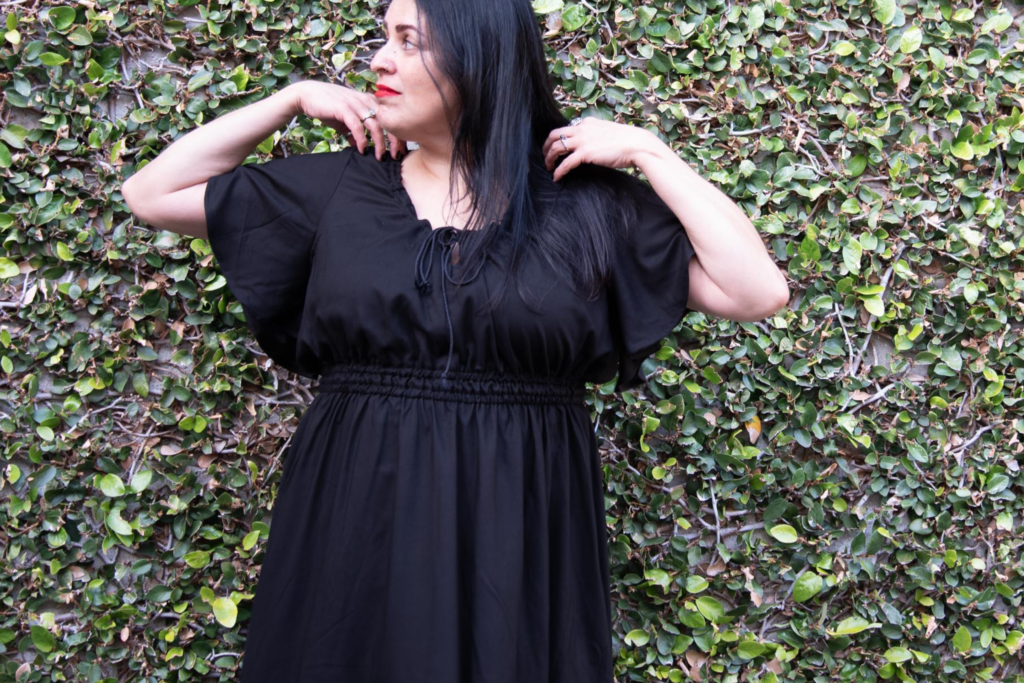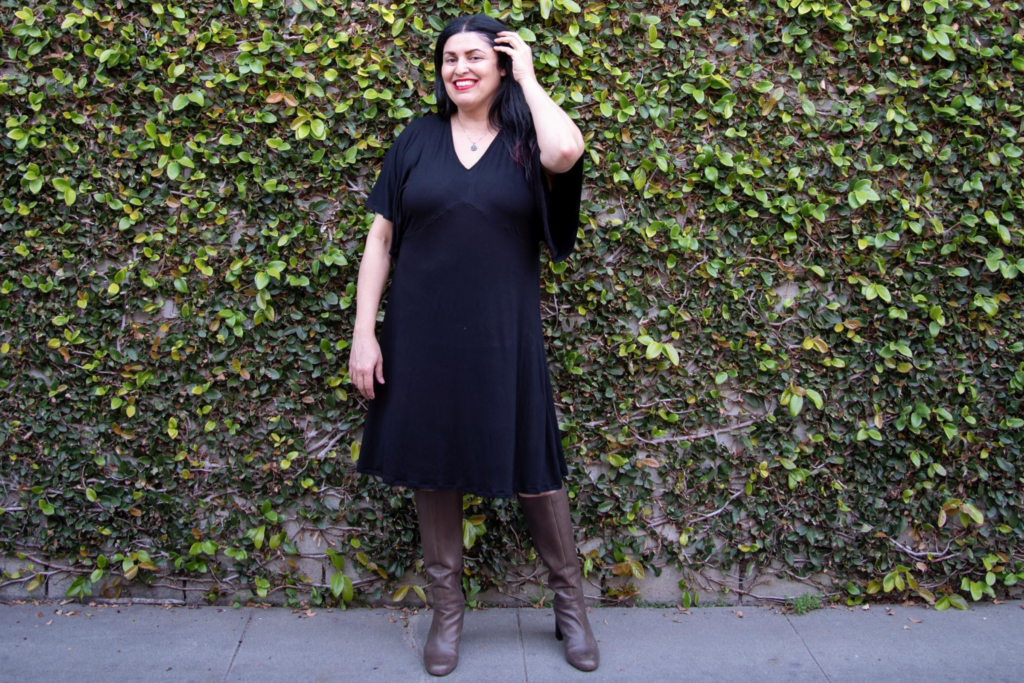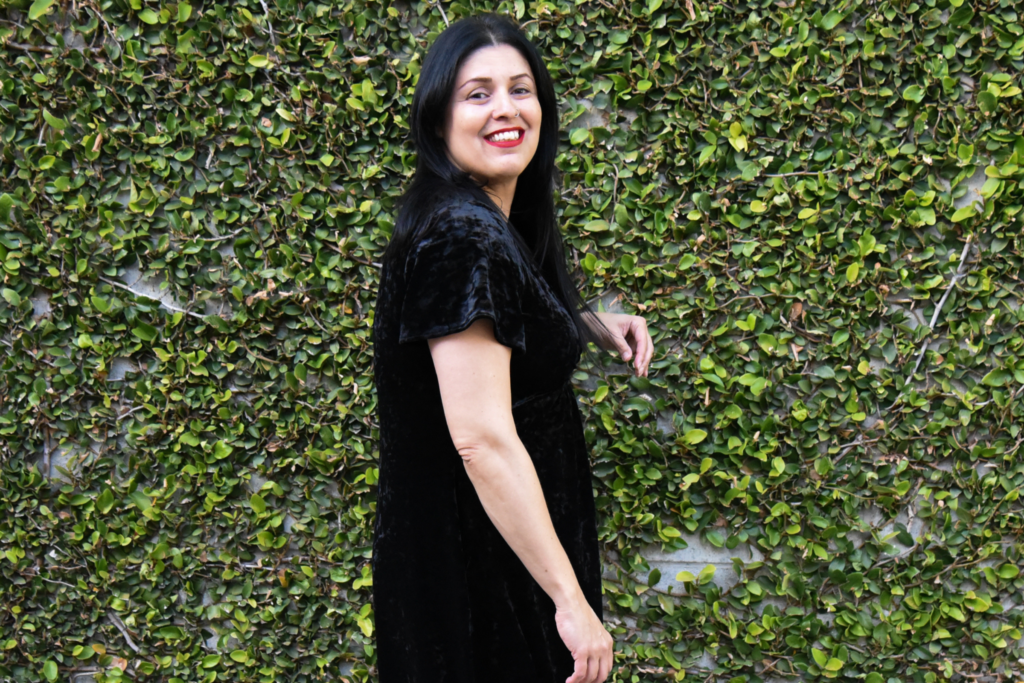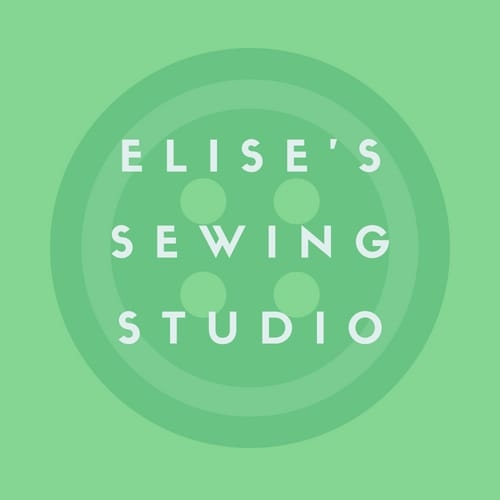We are a participant in the Amazon Services LLC Associates Program, an affiliate advertising program designed to provied a means for us to earn fees by linking to Amazon.com and affilated sites. We may earn money or products from the companies mentioned in this post.
I’ve started a blog series interviewing other sewing bloggers, teachers, and professionals to find out about how they started sewing, and what inspires them.
Here is interview #3, with Paula from SewGoth.

Q: Can you start by telling us a bit about yourself and how you got started learning to sew?
My name is Paula, and I started my sewing journey like many other sewists: I wanted clothing that fit me properly. As a lover of all things goth, I also wanted clothes that reflected this aesthetic.
My first experience with sewing was over 20 years ago. I bought a cheap machine (but super sturdy! It still works today). I sewed a hideous skirt that did not fit right, so I took a break. I got back into the swing of sewing a few years later and have been sewing ever since.
Q:How has your sewing journey evolved over the years? What inspired you to share sewing with others?
A: When I started sewing, I thought I was going to sew a few cool goth clothes and be satisfied. The more I sewed, the more I wanted to sew. I pushed myself to create garments that were more complex in skill, and I started to focus on fit.
I have been an educator for more than three decades, and I love teaching. Once I realized how much joy and confidence sewing brought me, I decided that I wanted to teach others how to have the same experience. The blog was an informal way to share my journey. More recently, I brought both lives—the one as a teacher and the one as a sewist—together, and I developed my first online sewing course, Sewing with Knits Made Easy.

Q: Sewing is a skill that takes time and practice to learn. What would you tell anyone who is struggling?
You are going to feel frustrated. You are going to fail. A lot. But failure is just a way for you to learn. We see failure as shameful, but if we change our mindset and see it as an opportunity to grow, this is when we learn. Every failure is a chance to gather information, tweak the process, and try again.
The most important thing is not to give up when you fail. As you said, sewing is a skill. The more you practice, the better you get at it.
Q: What are some of your favorite sewing projects that you’ve worked on, and why do they stand out to you?
I love sewing costumes. I am a HUGE fan of Halloween, and I really enjoy trying to figure out ways to turn an idea into a costume. I am the self-proclaimed queen of costumes no one recognizes because I choose characters that are very, VERY niche.
A great example of this is my Catra costume. I grew up watching He-Man and She-Ra cartoons (the original ones from the 80s), and I loved Catra. She is a villain who can morph into a huge panther, so I call her the ultimate cat lady! There were no patterns or tutorials to create this costume, so I had to piece together ideas to get to the final result. It is like having a mystery that you have to solve, and I love puzzles.
Q: I’m reluctant to use the word “fail” – but tell us about a project that didn’t work out and what you might have learned from it.
I had high hopes for a dress pattern I had been romancing for quite some time. Everybody’s finished dress looked beautiful. I sewed three muslins trying to get the fit right, but this dress would not cooperate. I was bummed as I really wanted to make it work, but that happened to be a style that I did not enjoy wearing.
Even though everybody else’s versions looked great (and the pattern is beautiful, well-drafted, and well-explained), it did not work for my personal taste. And that’s okay. I got to work on a kind of neckline I had never before tried before—that’s a new skill right there!
Q: What is something for new and seasoned sewists to keep in mind?
The best way to become a better sewist is just to keep on sewing. You are going to make MANY mistakes, but each mistake will teach you something, and it will bring you closer to mastery.
Another one: Sewing and fitting go together, but they require a different set of skills. I think this is something that is not widely discussed or addressed in sewing—you can sew beautiful clothing and never have a garment that fits you. Take the time to work the fit. It is not fun or glamorous to sew a muslin (or two or three), but in the end, you will get a much better result.
Q: What are some of your must-have sewing tools that you wouldn’t want to go without? Any recommendations for beginners?
I cannot live without my rotary cutter and mat. Just love them! And now that I have a serger, I can’t see my life without it.
For beginners, a good pair of fabric shears—that you will NEVER use to cut anything else—a pair of scissors to cut your patterns, and thread snips for those pesky thread tails. I also recommend a clear ruler, Clover fabric pencils (because they are so soft and delicious to work with!), and sharp pins. One more thing: Always keep extra machine needles around, and change your needles OFTEN.

Q: Anything you’d like to sew, but haven’t yet tried?
I have never made a proper corset. I sewed one for the Catra costume I mentioned before, but that one did not have a front busk. I have the fabric, the pattern, and the hardware to make one, so hopefully, this is the year of the corset.
Q: What is on your sewing table right now?
I just finished an Emma Dress by Designer Stitch, and I enjoyed working with this pattern so much that I’m sewing another one, this time with short, fluttery sleeves and a midi skirt.
Q: Do you have any upcoming sewing plans?
I have way too much fabric, so I’m trying to plan projects based on the options I have. I’m focusing on using patterns that I have figured out the fit but changing certain elements like neckline, sleeve, or length to add some variety to my wardrobe.
Q: Any parting words you want to leave us with?
Sewing is life-changing, and I’m not exaggerating. Once you realize that you can sew clothes that fit your body in all of its seasons and sizes, you will never go back to ready-to-wear clothing. This process can (and probably will) be frustrating, but don’t get discouraged. Sewing is a skill, and a skill is learned through practice and trial and error. And just have fun!
To find out more about Paula and Sew Goth:
My name is Paula, a practical goth, the sewist behind the SewGoth blog, and Headmistress at SewGoth Sewing School. SewGoth provides goth/alt and other nonconforming folks with education, inspiration, and support as they sew a wardrobe that fits their body and unique style.
I was never really one to follow the latest trends. As a child, I rocked long dresses and my orthopedic boots (a very early sign of my love of boots). As a teenager, I felt the most like myself when I was wearing jeans and a heavy metal band tee. My fascination with all things goth started when I bought my first Sisters of mercy album (Floodland, the one with the gorgeous and underutilized Patricia Morrison on the cover) and fully developed when I moved from Rio de Janeiro to Los Angeles in the early 1990s.
Finding clothes that match my style and fit my body has never been easy for me. I started sewing because there was nothing in the world of ready to wear that represented me. I had so many ideas in my head of what I wanted to wear but could not find them realized into clothing at any store. So I bought a cheap sewing machine, a few sewing patterns, some fabric, and I never looked back.
My goal is to help start a revolution in the fashion status quo, carving spaces for the alt/goth community to celebrate their unique style and bodies. I want SewGoth to help everyone find the motivation to say goodbye to ill-fitting, uncomfortable, and boring clothing and hello to their own amazing creations.
Paula’s Links:
Website: sewgoth.com
IG: https://www.instagram.com/sewgoth
Youtube Channel: https://www.youtube.com/@sewgoth
Facebook: www.facebook.com/sewgoth
Click here for Paula’s Free Simple, Sew Better Guide:
A little black book of best practices to elevate the quality of your handmade clothes without investing in new equipment or learning new skills or techniques.
- A few changes to your sewing practice that will have a huge impact on the quality of your finished garments
- Tried-and-true tips guaranteed to make your sewing practice more efficient
- Proven results without the need for new equipment or having to learn new sewing techniques

Thanks so much to Paula for the interview!
Photos provided by Paula Fonseca. Interview questions by Elise Chase-Sinclair.
More sewist interviews:
